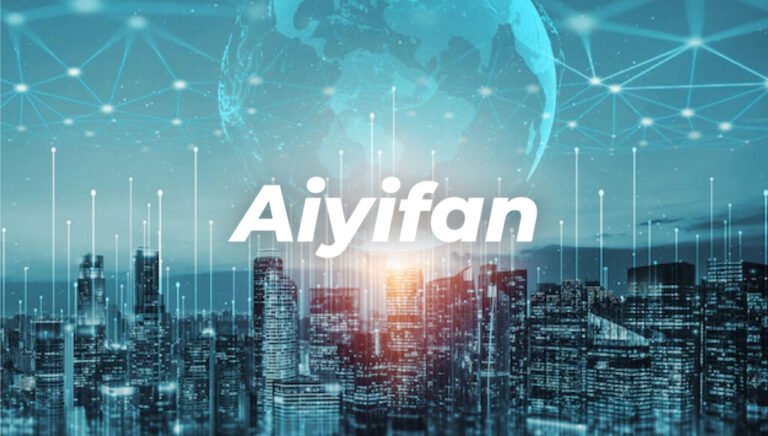FintechZoom Stock Futures – Best Stocks To Invest In
Introduction
The financial world is ever-evolving, and one of the most dynamic areas within this sector is the stock market. Among the myriad of tools and platforms available to investors, FintechZoom stands out as a prominent player, particularly in the realm of stock futures. This article will delve into the intricacies of FintechZoom stock futures, providing a detailed and comprehensive understanding of what they are, how they work, and their significance in the financial markets.
The History and Evolution of Stock Futures
Early Beginnings
Stock futures have a rich history dating back to the 17th century when Japanese rice merchants used similar contracts to hedge against price fluctuations. The modern concept of futures trading began in the 19th century with the establishment of the Chicago Board of Trade (CBOT).
Development in the 20th Century
The 20th century saw significant advancements in futures trading, with the introduction of electronic trading platforms and the expansion of futures markets globally. Key regulatory changes and the development of new financial instruments further shaped the industry.
What are Stock Futures?
Stock futures are contracts obligating the buyer to purchase a stock, and the seller to sell that stock, at a predetermined future date and price. These contracts are standardized agreements traded on futures exchanges and are used by investors to hedge risk or speculate on the future price movement of stocks.
Key Characteristics of Stock Futures
- Standardization: Stock futures contracts are standardized in terms of quantity, quality, and delivery time.
- Leverage: Futures contracts allow investors to gain significant exposure to stocks without having to invest the full amount upfront.
- Hedging: Investors use futures to hedge against potential losses in their stock portfolios.
- Speculation: Traders can speculate on the direction of stock prices and potentially profit from these movements.
The Role of FintechZoom in Stock Futures
FintechZoom has emerged as a pivotal platform in the financial technology landscape, providing real-time data, analytics, and trading tools for stock futures. The platform’s advanced features and user-friendly interface have made it a go-to resource for both novice and experienced traders.
Features of FintechZoom
- Real-Time Data: FintechZoom offers up-to-the-minute data on stock futures, ensuring traders have the latest information.
- Advanced Analytics: The platform provides sophisticated analytical tools that help traders make informed decisions.
- User-Friendly Interface: FintechZoom’s intuitive design makes it accessible to users with varying levels of expertise.
- Educational Resources: The platform offers a wealth of educational content, including tutorials, webinars, and articles, to help users understand the complexities of stock futures trading.
Understanding the Mechanics of Fintechzoom Stock Futures Trading
How Fintechzoom Stock Futures Work
When trading Fintechzoom stock futures, investors agree to buy or sell a specified number of shares at a set price on a future date. These contracts are typically settled in cash, meaning no physical delivery of the stock occurs. Instead, the difference between the contract price and the market price at the time of settlement is exchanged.
Margin Requirements
Trading stock futures involves margin requirements, which are essentially a good faith deposit to ensure the fulfillment of the contract. The initial margin is the amount required to open a position, while the maintenance margin is the minimum equity required to keep the position open.
Types of Orders
- Market Orders: Execute immediately at the current market price.
- Limit Orders: Execute only at a specified price or better.
- Stop Orders: Trigger a market order when a specified price level is reached.
Key Players in the Fintechzoom Stock Futures Market
Major Futures Exchanges
- Chicago Mercantile Exchange (CME): One of the largest and most diverse derivatives marketplaces.
- Intercontinental Exchange (ICE): Known for its energy futures, but also offers a wide range of financial futures.
- Euronext: A pan-European exchange that provides access to multiple futures products.
Market Makers and Brokers
Market makers and brokers play a crucial role in providing liquidity and facilitating trades in the futures market. They help bridge the gap between buyers and sellers, ensuring smooth and efficient transactions.
Benefits and Risks of Trading Stock Futures
Benefits
- Leverage: Allows for greater market exposure with a smaller investment.
- Liquidity: High liquidity ensures ease of entering and exiting positions.
- Diversification: Fintechzoom Stock futures can be used to diversify investment portfolios.
- Hedging: Protects against adverse price movements in stock holdings.
Risks
- Leverage Risk: Amplifies both gains and losses.
- Market Volatility: Stock futures can be highly volatile, leading to significant price swings.
- Margin Calls: If the market moves against the position, traders may be required to deposit additional funds.
Advanced Strategies for Trading Fintechzoom Stock Futures
Hedging Strategies
Hedging involves taking an offsetting position in the futures market to reduce risk. Common hedging strategies include:
- Protective Puts: Buying put options to guard against potential losses.
- Covered Calls: Selling call options while holding the underlying stock.
Spread Trading
Spread trading involves simultaneously buying and selling two related futures contracts to profit from the price difference. Popular spread strategies include:
- Calendar Spreads: Trading contracts with different expiration dates.
- Inter-Commodity Spreads: Trading contracts of different but related commodities or assets.
How to Trade Stock Futures on FintechZoom
Setting Up an Account
To start trading stock futures on FintechZoom, users must first create an account. The registration process involves providing personal information, verifying identity, and linking a bank account for funding.
Navigating the Platform
FintechZoom’s user interface is designed to be intuitive and easy to navigate. Users can access various features such as real-time quotes, charts, news, and analytical tools. The platform also offers customizable dashboards, allowing traders to tailor the interface to their preferences.
Placing Trades
Placing a trade on FintechZoom involves selecting the desired stock future, specifying the type of order, and entering the quantity. The platform provides a confirmation screen before executing the trade, ensuring users can review their order details.
Expert Insights on Stock Futures Trading
Market Trends
Keeping an eye on market trends is crucial for successful stock futures trading. FintechZoom provides comprehensive market analysis and reports that help traders identify potential opportunities and risks.
Technical Analysis
Technical analysis involves studying price charts and using various indicators to predict future price movements. FintechZoom offers a range of technical analysis tools, including moving averages, relative strength index (RSI), and Bollinger Bands, to assist traders in making informed decisions.
Fundamental Analysis
Fundamental analysis focuses on evaluating a company’s financial health, industry conditions, and economic factors. FintechZoom provides access to financial statements, earnings reports, and economic data, enabling traders to conduct thorough fundamental analyses.
The Impact of Economic Indicators on Stock Futures
Key Economic Indicators
- Gross Domestic Product (GDP): Reflects the economic health of a country.
- Inflation Rates: Measures the rate of price increase in the economy.
- Employment Data: Provides insights into the labor market and overall economic activity.
Analyzing Economic Reports
Investors closely monitor economic reports to gauge market sentiment and potential price movements. Understanding how these indicators influence stock futures can help traders make informed decisions.
Case Study: Successful Future Trading on FintechZoom Stock
Background
John, an experienced trader, used FintechZoom to trade stock futures. He focused on the technology sector, which he believed had significant growth potential.
Strategy
John employed a combination of technical and fundamental analysis to identify entry and exit points for his trades. He used FintechZoom’s advanced charting tools to analyze price patterns and indicators, and relied on the platform’s real-time news updates to stay informed about market developments.
Outcome
Over a period of six months, John achieved a substantial return on his investment by leveraging FintechZoom’s features and resources. His success was attributed to his disciplined approach, thorough research, and the platform’s robust tools.
Regulatory Environment and Compliance
Key Regulatory Bodies
- Securities and Exchange Commission (SEC): Regulates securities markets in the U.S.
- Commodity Futures Trading Commission (CFTC): Oversees futures and options markets.
Compliance Requirements
Traders must adhere to various regulatory requirements, including margin rules, reporting obligations, and anti-fraud regulations. Staying compliant is crucial for avoiding penalties and ensuring fair market practices.
Innovations and Future Trends in Fintechzoom Stock Futures Trading
Technological Advancements
- Algorithmic Trading: Using computer algorithms to execute trades based on predefined criteria.
- Blockchain Technology: Enhancing transparency and security in futures trading.
Emerging Markets
The globalization of financial markets has led to the emergence of new futures markets in regions such as Asia and the Middle East. These markets offer new opportunities and diversify the trading landscape.
Frequently Asked Questions
What are stock futures?
Stock futures are contracts obligating the buyer to purchase, and the seller to sell, a specific stock at a predetermined future date and price.
How can I trade stock futures on FintechZoom?
To trade stock futures on FintechZoom, you need to create an account, navigate the platform, and place trades using the available tools and features.
What are the benefits of trading stock futures?
Benefits include leverage, liquidity, diversification, and hedging against adverse price movements.
What are the risks associated with stock futures trading?
Risks include leverage risk, market volatility, and margin calls.
How can I minimize risks when trading stock futures?
Minimize risks by conducting thorough research, using stop orders, diversifying your portfolio, and maintaining adequate margin levels.
Conclusion
FintechZoom has established itself as a trusted and authoritative platform in the stock futures trading space. Its comprehensive features, user-friendly interface, and educational resources make it an invaluable tool for traders. By leveraging FintechZoom’s advanced analytics and real-time data, traders can navigate the complexities of the Fintechzoom stock futures market with confidence. Whether you are a novice or an experienced trader, FintechZoom offers the tools and insights needed to succeed in the dynamic world of stock futures trading.






